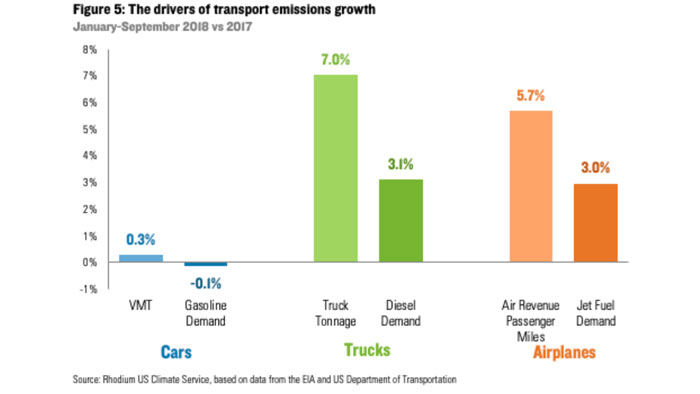
U.S. carbon dioxide emissions rise sharply in 2018, after three years of decline
After three years of decline, U.S. carbon dioxide (CO2) emissions rose sharply last year, according to the Rhodium Group, a leading independent research provider headquartered in New York, N.Y., U.S.A.
Based on preliminary power generation, natural gas, and oil consumption data, Rhodium Group estimates that U.S. emissions increased by 3.4% in 2018.
“This marks the second largest annual gain in more than two decades — surpassed only by 2010 when the economy bounced back from the Great Recession,” the company said.
While a record number of coal-fired power plants were retired last year, natural gas not only beat out renewables to replace most of this lost generation but also fed most of the growth in U.S. electricity demand. As a result, U.S. power sector emissions overall rose by 1.9%.
The transportation sector retained its title as the largest source of CO2 emissions in the U.S. for the third year running. During the first nine months of the year, gasoline demand declined by 0.1% as modest efficiency gains offset a minor increase in vehicle miles traveled. But robust growth in demand for both trucking and air travel increased demand for diesel and jet fuel by 3.1% and 3.0%, respectively. This highlights the challenges in decarbonizing the transportation sector beyond light-duty vehicles.
“Here we see efficiency improvements and electrification beginning to make a dent, albeit not nearly a big enough one to meet medium- and long-term U.S. emissions targets,” the company said.
“Preliminary fourth quarter data suggests an accelerated decline in gasoline demand, an uptick in diesel demand and moderation in jet fuel demand relative to the first three quarters of the year. All told, we estimate that transportation emissions grew by 1% in 2018, roughly the same as the 2017 growth rate.
The buildings and industrial sectors also both posted big year-on-year emissions gains. Some of this was due to unusually cold weather at the start of 2018, but it also highlights the limited progress made in developing decarbonization strategies for these sectors.
CO2 emissions from fossil fuel combustion in the U.S. peaked in 2007 at just over six billion tons. Between then and the end of 2015, emissions fell by 12.1% — an average rate of 1.6% per year. The Great Recession played a significant role in that decline, but the carbon intensity of U.S. energy supply also dropped dramatically, primarily due to a switch in power generation from coal to natural gas, wind, and solar.
Since 2016, the pace of U.S. emissions decline has slowed, from 2.7% in 2015 to 1.7% in 2016 to 0.8% in 2017.
Combined with a lack of new climate policy action at the federal level, risk putting the U.S. emissions reduction goal under the Paris Agreement — a 26-28% cut below 2005 levels by 2025 – out of reach, the company added.









